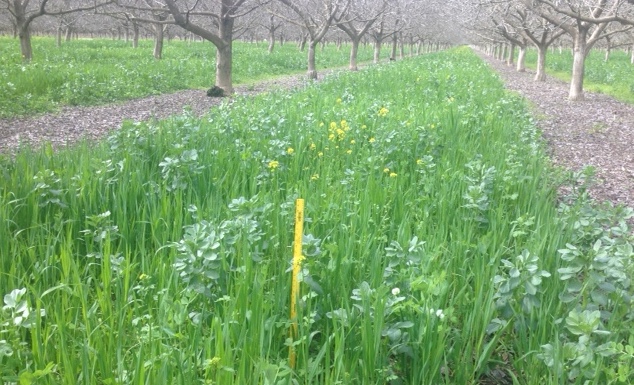MID-SEASON COVER CROP UPDATE
It is obvious to the trained eye that many cover crop plantings are struggling due to a lack of Nitrogen. This nutrient need should be addressed early by applying compost and or being prepared to add a small amount of actual Nitrogen if compost is not used. A maximum amount of 40 pounds should be considered to feed the grass and yet not restrict the legumes ability to make Nitrogen. This is said with a few “ it depends “. Drilling seed followed by irrigation without a Nitrogen source in many cases is not advisable. Growers must be prepared to prime the pump so to speak to make sure that the cover crops start with vigor. The idea is to promote a vigorous cover growth that can supply many of the nutrients that the tree crop may need in a high production program. This requires that it get off a good start. A robust cover ensures a healthy soil which relates to a healthy plant which in turn helps reduce disease and pest pressures. Also, this cover helps reduce water runoff either from irrigation or thru a rain event.
It is our recommendation that all cover crop plantings receive a minimum of 40 pounds of actual Nitrogen from some source. This can be accomplished by Ammonium Sulfate and or Ammonium Phosphates. The exception seems to be if accompanied by at least 4 ton of compost and the field in question has a history of cover crops, then this additional Nitrogen may not be necessary . A prior robust cover that decomposes just ahead of harvest appears to have adequate Nitrogen for a good cover start.
It takes more than 40 pounds of Nitrogen to grow the desired cover crop. This will come from the cover mix of legumes that provide this nutrient. So, proper seeding is a must, meaning a regular grain drill should have a small seed box attachment to deal with the varying seed sizes. This will allow for even distribution of the legume that will provide Nitrogen to the companion grasses. Be sure to treat the legume seed with the proper inoculant prior to planting.


Leave a Reply